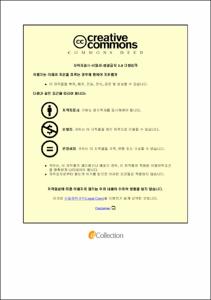Application of the Ecosystem-Based Fisheries Resource Assessment Approach for Bigeye tuna (Thunnus obesus)
- Alternative Title
- 눈다랑어의 생태계 기반 수산자원 평가방법 적용
- Abstract
- This study is focused on applying an ecosystem-based fisheries assessment (EBFA) approach for the management of bigeye tuna in Fiji’s EEZ. The method involves the application of four main objectives including sustainability, biodiversity, habitat quality and socio-economic benefit. This thesis uses a Tier 2 Approach due to the availability of data and it involves the application of various attributes as well as applying four indicators for sustainability, three indicators for biodiversity, four indicators for habitat quality and five indicators for socio-economic benefit. Each indicator was assigned with a level of magnitude that reflects the importance of the relative indicator. The target and limit reference points was chosen for each indicator to assess the status of species, fisheries and ecosystem. The target reference point relates to a state of each indicator that is considered desirable while the limit reference point is considered as the limit beyond which the state of each indicator is not considered desirable. In utilizing the ‘Tier 2 Approach’, species are given a status for each indicator to denote risk and the mean risk scores for each indicator is directly calculated and estimated from interviews or questionnaire data. Nested risk indices such as the objectives risk index (ORI) and the species risk index (SRI) were also evaluated as they characterize and assess the status of the ecosystem at the management unit level.
Problems caused by the various aspect of tuna fisheries can be solved by an ecosystem approach to fisheries management such as this EBFA approach, especially in Fiji’s tuna longline fishery to help reduce high-risk indices in the exploitation of the marine resources.
- Issued Date
- 2018
- Awarded Date
- 2018.2
- Type
- Dissertation
- Publisher
- 부경대학교
- Affiliation
- 부경대학교 글로벌수산대학원
- Department
- 글로벌수산대학원 국제수산과학협동과정
- Advisor
- 장창익
- Table Of Contents
- Chapter 1 Introduction 1
1.1 Purpose of the study 4
Chapter 2 Materials and Methods 6
2.1 Associated attributes 7
2.2 Indicators for Tier 2 Approach 7
a) Sustainability 8
b) Biodiversity 8
c) Habitat quality 9
d) Socio-economic benefit 9
2.3 Questionnaires and estimation of risk scores 12
2.4 Target and limit reference points 14
2.5 Sample standard deviation 16
2.6 Coefficient of variation 17
2.7 Confidence interval 17
2.8 Nested risk indices 18
2.9 Objectives risk index (ORI) 21
2.10 Species risk index (SRI) 21
Chapter 3 Results 23
3.1 Evaluating risk scores and confidence interval 23
3.1.1 Indicators for sustainability 23
3.1.2 Indicators for biodiversity 23
3.1.3 Indicators for habitat quality 24
3.1.4 Indicators for socio-economic benefit 25
3.2 Number of indicators in each risk zone 27
3.3 Evaluation of objectives risk index (ORI) 29
3.4 Evaluation of species risk index (SRI) 31
Chapter 4 Discussion 32
Chapter 5 Conclusion 34
References 36
Acknowledgement 39
Appendices 40
Appendix 1. Target and limit reference points for indicators of sustainability in the Tier 2 EBFA 40
Appendix 2. Target and limit reference points for indicators of biodiversity in the Tier 2 EBFA 44
Appendix 3. Target and limit reference points for indicators of habitat quality in the Tier 2 EBFA 45
Appendix 4. Target and limit reference points for indicators of socio-economic benefit in the Tier 2 EBFA 47
Appendix 5. Estimation of risk scores from each questionnaire 49
Appendix 6. Questionnaire survey form 50
- Degree
- Master
- Appears in Collections:
- 글로벌수산대학원 > 국제수산과학협동과정
- Files in This Item:
-
-
Download
 Application of the Ecosystem-Based Fisheries Resource Assessment Approach for Bigeye tuna (Thunnus o.pdf
기타 데이터 / 1.57 MB / Adobe PDF
Application of the Ecosystem-Based Fisheries Resource Assessment Approach for Bigeye tuna (Thunnus o.pdf
기타 데이터 / 1.57 MB / Adobe PDF
-
Items in Repository are protected by copyright, with all rights reserved, unless otherwise indicated.